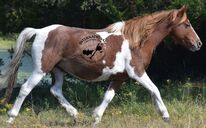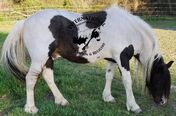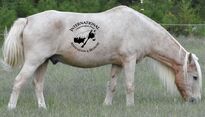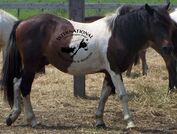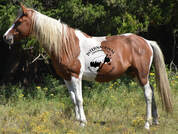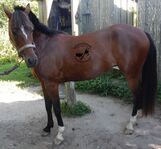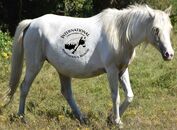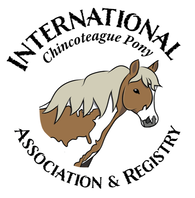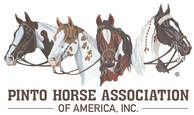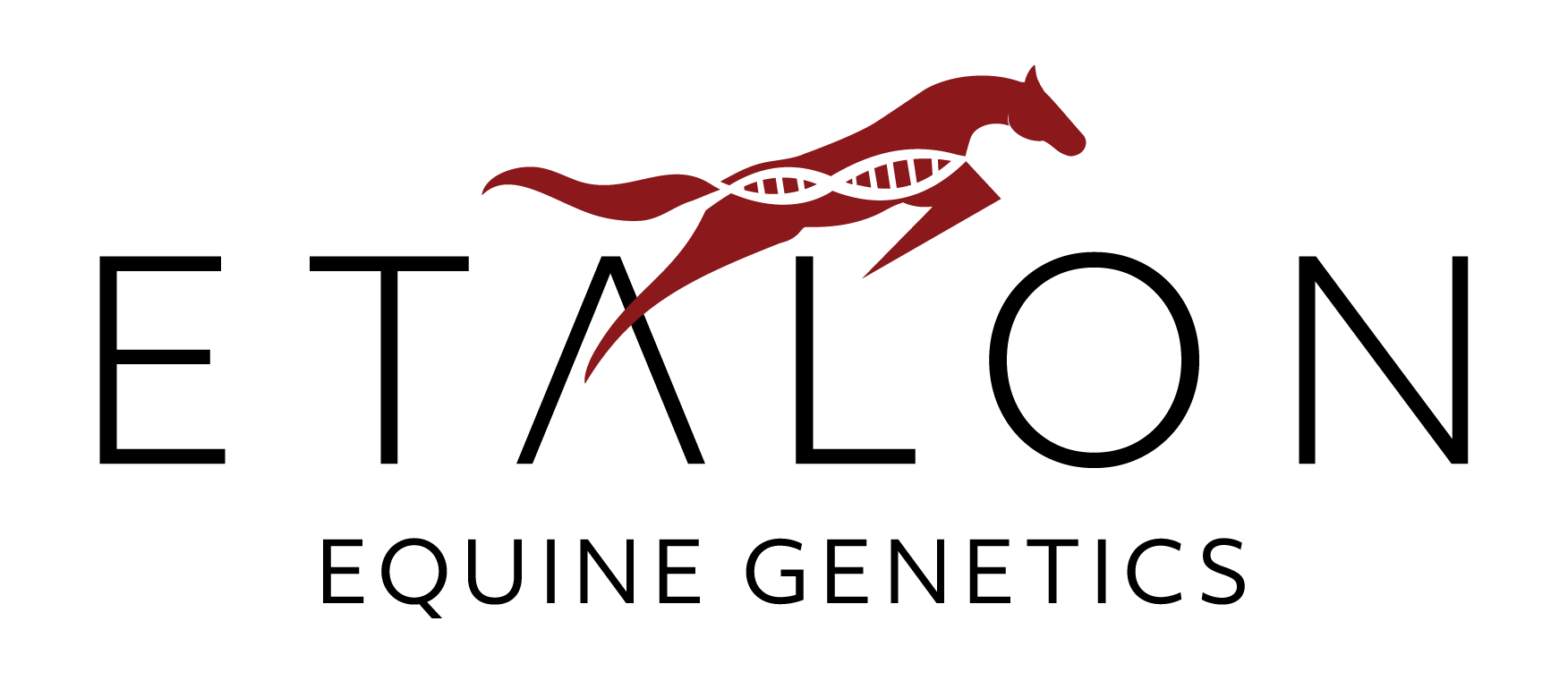Characteristics
Chincoteague Ponies are a hardy breed from their origins as a feral landrace. They have adapted well to their island home and their physiology reflects this. Chincoteagues are a pony breed but some individuals reach horse height. Their appearance and proportions are more horselike than pony despite their pony size.
Chincoteague Ponies are known to have strong thick legs and feet and often do not require shoes. The manes and tails are thick and bushy. Chincoteague grow a thick winter coat. Light feathering on the legs is common. Eyes are large and well spaced. They are considered easy keepers. With their sturdy horselike build and good bone Chincoteagues are suitable mounts for children and many adults. Chincoteagues regularly live into their 20s and 30s is not uncommon.
Feral Chincoteagues are shorter in general than their domesticated counterparts due to surviving on a barrier island and differences in diet. They have bloated bellies from their salt marsh diet. Island born ponies raised off of Assateague will usually grow taller than their island family and will not have a bloated belly. An increase in height is common with ponies selectively bred by breeders.
Arabian has been the most frequent breed introduced into the feral herd. Ponies with Arabian blood will have Arabian characteristics such as long arching necks, high set tails, dished faces, and slender well formed legs. Mustang is the second most common breed introduced and they added height, longer legs, longer necks, and additional athleticism.
There is a large variation in type due to the main breeding group being feral and the introduction of a variety of breeds through the it's history. Chincoteague Ponies fall into two general types, Traditional and Sport. Many individuals will have characteristics of both.
Chincoteague Ponies are known to have strong thick legs and feet and often do not require shoes. The manes and tails are thick and bushy. Chincoteague grow a thick winter coat. Light feathering on the legs is common. Eyes are large and well spaced. They are considered easy keepers. With their sturdy horselike build and good bone Chincoteagues are suitable mounts for children and many adults. Chincoteagues regularly live into their 20s and 30s is not uncommon.
Feral Chincoteagues are shorter in general than their domesticated counterparts due to surviving on a barrier island and differences in diet. They have bloated bellies from their salt marsh diet. Island born ponies raised off of Assateague will usually grow taller than their island family and will not have a bloated belly. An increase in height is common with ponies selectively bred by breeders.
Arabian has been the most frequent breed introduced into the feral herd. Ponies with Arabian blood will have Arabian characteristics such as long arching necks, high set tails, dished faces, and slender well formed legs. Mustang is the second most common breed introduced and they added height, longer legs, longer necks, and additional athleticism.
There is a large variation in type due to the main breeding group being feral and the introduction of a variety of breeds through the it's history. Chincoteague Ponies fall into two general types, Traditional and Sport. Many individuals will have characteristics of both.
Traditional Type
Traditional type Chincoteagues have a close coupled stocky pony appearance. They resemble their Assateague Horse cousins and often are closely related to them. Traditional type can stand from 11 to 13.3 hands. The neck is short with prominent withers. The croup is sloped with a middle to low set tail. The head is blocky with a pony appearance and a straight profile, a convex profile is uncommon. Legs are short, thick, and sturdy.
Sport Type
Sport type Chincoteagues frequently have Arabian, Mustang, Quarter Horse, Paint Horse, and/or Thoroughbred blood and retain characteristics of those breeds. They stand from 13 to 14 hands, with a rare individual reaching 15 hands. Sport type have longer more refined necks and longer slimmer legs than their traditional counterparts. Head is finely shaped with a straight or concave profile. The tail is middle to high set.
Color
Chincoteague Ponies come in many colors; bay, chestnut, black, palomino, buckskin, smoky black, and double cream dilute. Flaxen chestnut, mealy, and sooty are found. Chincoteagues are commonly pinto with tobiano the prevailing pinto pattern. Tobiano roaning and cat tracks are often found on tobianos. Splashed White (SW1) is common and is frequently mixed with tobiano. White 20 (W20) is present in the population. Chincoteagues with primitive markings (nd1), belton spotting, bend or spots, and birdcatcher spots have been found.
The most common eye color is brown. One, two, and partial blue eyes are frequently found due to the presence of splashed white. Single cream dilutes occasionally have light brown eyes and double cream dilutes will have blue-green eyes. Visible white sclera is common.
The most common eye color is brown. One, two, and partial blue eyes are frequently found due to the presence of splashed white. Single cream dilutes occasionally have light brown eyes and double cream dilutes will have blue-green eyes. Visible white sclera is common.
Temperament
Chincoteague Ponies are friendly, curious, outgoing, and eager to please. They have an independent personality and are intelligent. Many will have a pony attitude. Foals born on Assateague transition quickly to domestic life with training. Ponies with Arabian blood trend hotter in temperament.
Genetic Disorders
Chincoteagues have few known genetic disorders. Ponies affected with Degenerative Suspensory Ligament Disease (DSLD) have been found. The genes for Equine Recurrent Uveitis, lordosis/swayback, Equine Metabolic Syndrome Susceptibility Risk (EMS) Chronic Idiopathic Anhidrosis Risk (CIAR), and Equine Herpesvirus Myeloencephalopathy Risk (EHMR) are present in the population. Other disorders commonly found in horses are likely. Genetic disorders found in breeds that have been crossed into the Chincoteague Pony are possible.
|
International Chincoteague Pony
Association & Registry 10723 County Road 11 NE Elgin, MN 55932 (507) 923-8933 [email protected] Office Hours Monday to Friday 11 am to 4:00 pm CT |
Quick Links
|
© Copyright 2021-2024 -The material, Association logos, and photographs on this website are the property of International Chincoteague Pony Association & Registry LLC. No part of this Web site may be reproduced in any way without the express, written consent and authorization of the International Chincoteague Pony Association & Registry LLC.
All rights are reserved.

